#title analysis
Photo
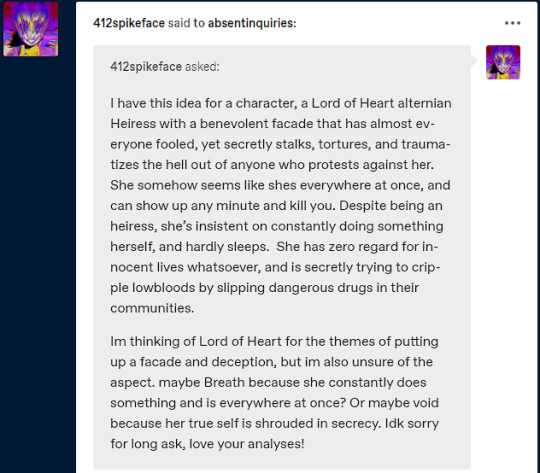
REGENT: To start with, never apologize for lengthy questions or the like. Minute details help piece together a better understanding of an individual, so honestly, the longer-slash-more-detailed the question, the better.
REGENT: Secondly, I’m flattered. .)
REGENT: As to the question at hand, I think you’ve probably got a good read on them from the get-go, but just saying “yeah sounds about right” would be anticlimactic, uncharacteristic of me, and would honestly sound like something Dirk would say. So, I’m gonna do as we Seers are wont to do and take something simple and answer it in a more complicated way than it deserves to be said.
REGENT: In regards to the Lord part; that sounds spot-on. Ruthless, domineering, petty, obsessive, spiteful, rampant - these traits all fairly accurately describe the nascent Lord. It is possible for a Lord to move past this stage of personal being, tempering their worse determinations with wisdom and compassion, but such is rare.
REGENT: As for the Aspects, I can easily rule out Breath, if only because it is an element which deals largely in freedom and forward movement; restlessness, personal liberty, and constant action are the hallmarks of Breath, and such traits would likely be magnified and perverted - but not inverted - by being fixed upon a Lord.
REGENT: Void is a fairer secondary possibility; the Aspect of lack, absence, secrets and obfuscation. It is certainly possible for a Lord of Void to manifest their connection to the Void through omission - active or otherwise. After all, Void is intrinsically connected to the Aspect of Light - that of knowledge - and so would easily manifest through “hiding knowledge”, in a manner of speaking.
REGENT: But, I think Heart is the most appropriate aspect for this Heiress. Heart is the Aspect of the Self, and as such - and I say this with full respect to all the Heart players I know - those with a strong connection to the Aspect are strongly self-oriented. Self-reflecting, self-obsessive, selfish - and refusing outside assistance to do things oneself isn’t uncommon at all for the Heart-Bound.
REGENT: Not all Heart players have to deal with multiple unique splinter-existences from themselves as Dirk does; sometimes they have to deal with self-discovery, and sometimes - as would be the case with the Heiress in question - it can simply be a matter of having two separate “faces”. One of honey-tongued benevolence, and one of cruelty and spite.
REGENT: Now, granted, this does kind of all boil down to “gut feeling backed by extensive study”, so it should be taken with its measure of salt, but after a handful of years researching this subject, I reckon I’ve got a very good handle on feeling these things out accurately.
REGENT: Hopefully you found this assessment either - preferably both - agreeable and informative, and I hope I never have the displeasure of running into that Heiress.
4 notes
·
View notes
Text
Just for fun, inspired by my making my sideblog for my latest work with the Romanian title
Imaginea prin sticla groasă- The image through the thick glass
The English title being a translation (hopefully a coherent sounding one, because I'm not sure if the word image is accurate here??). The intention behind the title: Main character is a dude with severe myopia who lives a generally extremely depressing life. The point I was trying to drive home was that he saw the world in a blurry way literally and metaphorically. Given I was literally 12 when I wrote it, it's impressive for how long I've been obsessed with themes such as mental illness and neurodivergence. Totally not projection.
Cele 5 cărți ale nemuritorilor - the 5 books of the immortals
The title I kind of thought in English first? It was a reference to the video game series me and my cousins were working on, The Immortals, which was meant to be a Final Fantasy type of series. I took installment 13 (of 20) and named it this because there was a group of 5 main characters, each having their own section. I recontextualised the "Immortals" part after deciding this was no longer fantasy by making it about the permanence of legacy or whatever...
Train of Thought - Trenul amintirilor
This one I thought directly in English although the actual thing I wrote only in Romanian. The pun just goes perfectly I think: the characters have a dream sequence and then end up in a hospital after a train accident. The Romanian version literally says "the train of memories" which is also accurate to the story but doesn't go as hard as the English one.
The Land of Eternal Winter (@the-land-of-eternal-winter-novel) - Țara iernii eterne/ Țara iernii veșnice
I have written this story directly in English from draft 0, so I thought the title directly in English, which is why it's hard for me to decide on the proper Romanian title. In Romanian, "etern" is the standard word for eternal, but "veşnic" is the religious coded word, which would kind of fit. My only problem is that it would sound too much like "Țara vieții veșnice" = land of eternal life, aka Heaven, which... besties, the country these characters live in is very very much not Heaven. Neither is it hell btw. No winter-coded hell in this household. If it's not Heaven or hell it means it's Earth, which is kind of the whole point of having such a title. But then using a very religious coded word would ruin in. But the religious word is Slavic!! And my story takes place in a Slavic inspired winterland environment. And my story is very much Christian and has many religious themes and connotations (even eschatological ones if I commit to the bit harder in draft 2). So I'm still torn. Open to opinions
Artificii în ceață (@artificii-in-ceata) - Fireworks in the Fog
I'm patting myself on the back real hard for this one tbh. Fireworks because New Year's Eve is a leitmotif in this story. Also Fireworks are like beautiful (romance) but also made of fire (passion, romantic or otherwise). Fog because it implies something is blurry and hard to see (unclear thinking) or maybe intentionally hidden (see fog machines for example in concerts, where they also have fireworks; the main characters are very much the type of people to go to rock concerts and stuff; the main symbol is secrecy tho). But here comes the best part. In Romanian, "artificii" can mean either fireworks (from singular form artificie) or artifices (from singular form artificiu). And that just fits perfectly. Yes, these characters have a lot of artifice about them.
#my novel#my writing#the land of eternal winter#fireworks in the fog#the image through the think glass#train of thought#the 5 books of the immortals#title analysis
3 notes
·
View notes
Text
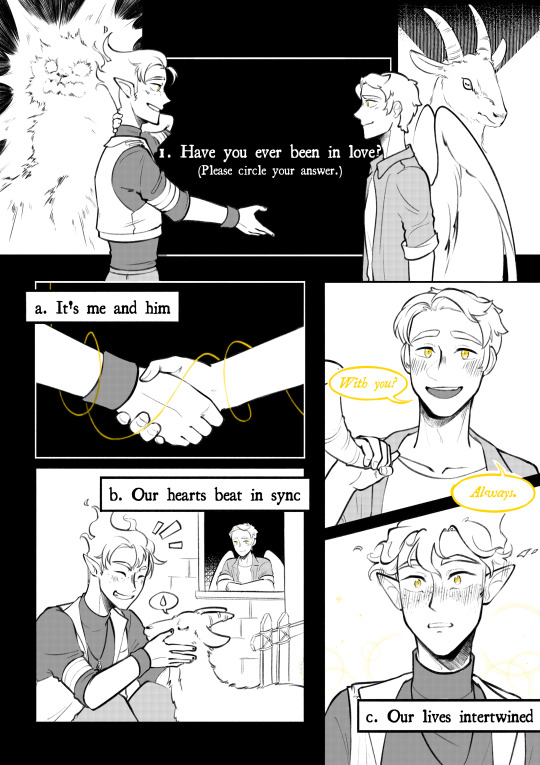
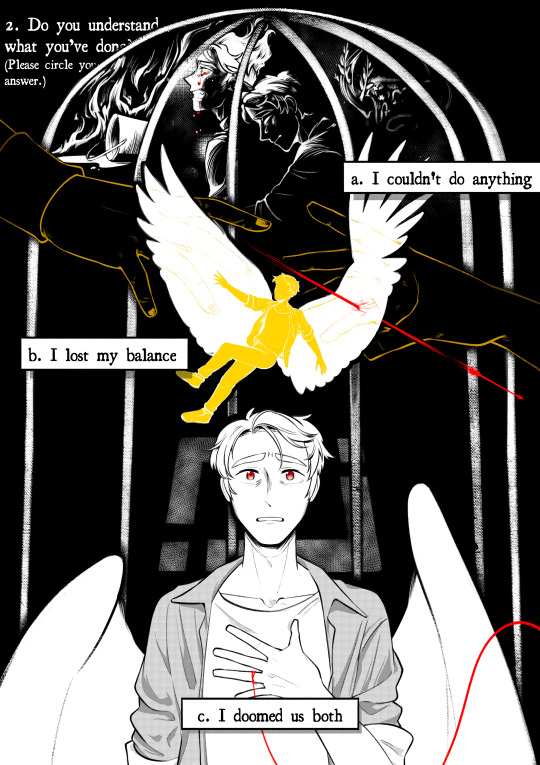


You have 90 minutes to complete. (original poem: r.a.)
In participation of the MCYT Recursive Exchange 2024 hosted by @mcytrecursive!
Inspired by know that all my love will be your breath (i will save you when your lights go out)
[text under cut]
1. Have you ever been in love?
(Please circle your answer.)
a. It's me and him
b. Our hearts beat in sync
c. Our lives intertwined
2. Do you understand what you’ve done?
(Please circle your answer.)
a. I couldn't do anything
b. I lost my balance
c. I doomed us both
3. It's been god knows how long since you felt phantom hands on your neck and there is no one in sight. If you were soul-bound to him and both of you died at the same time then why are you still waiting in the void?
Please answer clearly, in full sentences.
(Not a correct answer:I just wanted to see him one more time).
4. Define two (2):
Fate | The feeling of his forehead against yours
Curse | The moment you realise he isn't linked to you anymore
5. True or False:
i. It was your fault.
ii. You wish you had met him under different circumstances.
iii. You can’t regret a single moment that you had him.
iv. You would do it all over again if you could.
v. It ended long before either of you said anything.
thumbnails:

sketch cover thing for imgur link:

#team ranchers#team rancher#rancher duo#jimmy solidarity#tangotek#trafficshipping#mcyt recursive exchange#events#fic fanart#my art#“canary has butterfly-shaped wings it cant do a dramatic spread like that” watch me. (draws dramatic wings) (sorry)#“you have 90 minutes” have been rattling in my brain for so long ever since i suddenly remembering a web weave using it (yes the beeduo one#very glad i can release it (using it in art) from its confines (my mind)#hm i suppose the title would be more in theme if its abt limited life ranchers#← havnt watched limlife yet#but! happy with what i come up with. lil bit proud even#had so much trouble with the panelling and layers in p2 cause it looks too busy (explodes)#also punching the floor bc i only noticed the “yes-no” pair(?) in the original poem when im already half-done w/ the comic#me when making silly comic makes you do poem analysis#i dont even go there ← does not have enough poetic braincells
3K notes
·
View notes
Text
in Storm Bringer, Iceman mentions Chuuya punching a guy through (several) ceilings for having asked him about his past. That guy was a wholeseller Chuuya was supposed to be making a deal with for the jewel trade he was in charge of. That incident happened July 18th, and it took the guy 3 months to heal.
Now, we know both halves of skk were 15 in, well, Fifteen, and that at this time in SB, they should both be 16. Chuuya's birthday is in April, and Dazai's, June.
Since there was a time skip of a month at the end of Fifteen, the punching incident can't have been from then, as we need at least that amount of time for Dazai's birthday to have already passed. So this was after the boys' 16th birthdays, July 18th +3 months, placing SB's events at somewhere at least mid-October, even November.
The events of SB take place over like, at most, 2 weeks, between the Flags' deaths and the final fight. Then, there's another one-month skip in the epilogue, +1.5 month, so we're now at minimum in December-January range.
The Dragon's Head Conflict is said to have happened "shortly after the King of Assassins incident". Skk should still be 16 during the conflict, so we have until the end of April to get there. The conflict lasted for 88 days, nearly 3 months, bringing us to a bare minimum of it starting at the tail end of January.
What I'm saying is there was barely 6 months, most likely even less, between SB and the end of the Dragon's Head Conflict. The PM might have mostly avoided taking part in it (canon reason why they managed to take over the underworld in its wake), but they still suffered from it all the same, especially since they had just spent and lost a lot of resources during their fight against Verlaine.
Also Chuuya must have had like 3 months to make those friends before losing them too.
#it's not even a hell year it's more like a hell 5 months#and NO chuuya wasn't an executive that was a mistranslation in the novel he was a CANDIDATE for the title like dazai#see: fifteen's epilogue it's written right there#dazai got the promotion and chuuya got the arahabaki papers mori was witholding as a prize#mori probably had to balance it out because my boy was Going Through It and skk need to stay on equal footing more or less for it to work#bungo stray dogs#bungou stray dogs#bsd#bsd analysis#storm bringer#stormbringer#bsd stormbringer#bsd fifteen#apparently i talk sometimes#bsd timeline#this should be a tag
847 notes
·
View notes
Text
the thing with Solas is that he's proud, and wise, and clever, and cunning, and regretful, and guilty, and honest when it'd be so much easier to lie, but while canon tells (and shows) us all of that, it doesn't tell us that the other deep-seated emotion that drives him is shame.
shame about what he did, shame about what he's going to do; shame about what he was, shame about what he is; shame about killing his friend; shame about viewing the people of the current Age as shadows; shame about not knowing better; shame about not wanting to know better; shame about a befriended/romanced Inquisitor, shame about the friends he made; shame about hiding in plain sight, shame about not telling the truth; shame about making the same mistake twice, knowing how it'll turn out; shame about his outbursts, shame about not being good enough; shame about feeling attached to the current Thedas, shame about not feeling attached enough to stop; shame about not having anything to be proud of anymore.
I was recently struggling with a scene that didn't go the way I thought it would, until I realized that neither pride nor guilt nor regret nor wariness was the the real motivation; they were just the result, the display, the cover: the real motivation was the shame.
and then everything kind of clicked into place, precisely because pride is such a focal point of Solas' character - if shame is a deep-seated emotion, it contradicts his pride, his wisdom, his intellect; if shame is a deep-seated emotion, it fuels his regret, his guilt, his determination; if shame is a deep-seated emotion, it's the one thing he's actually managed to conceal. (then again, I wonder if he's even aware that what he's feeling is shame.)
and, as I kept thinking about it, it kept making sense: to be ashamed is a grave sentence for someone like Solas, who's entire character revolves around his pride and his wisdom and his regret. he regrets enough of his mistakes to be disappointed, unsatisfied with himself, to be uncomfortable with what he's done; he's wise enough to know that he has no logical reason to feel ashamed for half of these things and yet even more reasons to feel ashamed for the other half; he's proud enough to loathe admitting to this shame. he gets wary if you poke at him, defensive if you manage to get to close to this sore spot, upset if you keep at it. his pride won't allow him to admit to his shame, and his wisdom won't allow him to not admit to it, and his shame won't allow him to speak about it, and that keeps him stuck in this vicious cycle.
#dragon age#dragon age inquisition#dragon age meta#solas#low-effort character analysis pt. 2#lovingly titled the 'pride and shame meta' in my drafts#shame about being a wolf? in the same breath that he is/was proud to be a wolf?#shame about the Veil? in the same breath that he's proud of saving the world? shame about destroying it?#shame about KILLING HIS FRIEND?#shame about being the monster? proud to have threatened the Evanuris?#shame about all his plans going awry? proud to be still trying?#too ashamed to hope; too proud to give up; too wise to try without#no i don't know where i wanted to go with this. i just had this in my head for weeks now.#and now so do you :)
298 notes
·
View notes
Text
Malleus Draconia & The Great Expectations
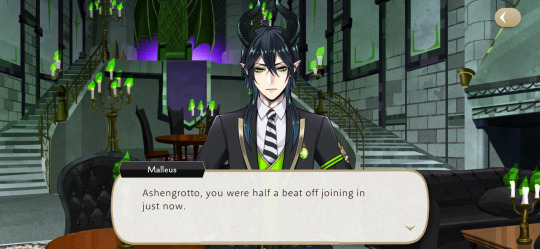
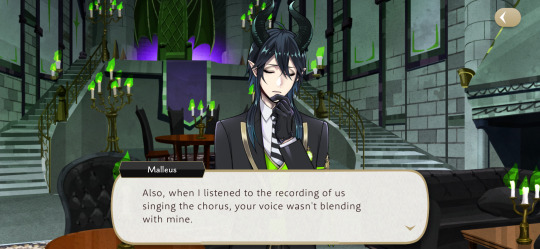
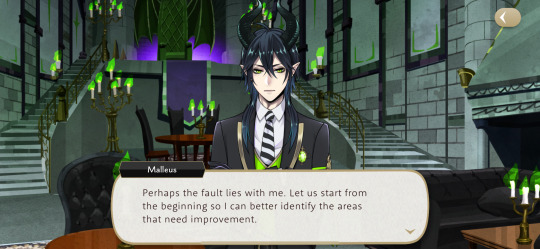
It’s interesting to me how much we learn about Malleus and others in his glorious masquerading card
In this part, we can see the hints of the pressure others and he, himself, puts on him.
Not only does he always have to be perfect, probably because that’s what he grew up being told as the future King of Briar Valley.
But, he never blames others.
Azul voice didn’t meld well with his?
It wasn’t Azul’s fault, no, it was Malleus’.
Malleus then took steps to learn how he could improve to blend with Azul better. Never did he blame Azul, but in a way, he blamed himself for his failures.
It shows to you how high others held him to the point he views himself like this.
How it’s not the people’s fault, but the ruler’s.
Can you imagine always thinking that way? Always trying to be perfect and meet these expectations.
He’s just like Riddle in that regard, isn’t he? And being the prideful dragon he is, why couldn’t he uphold these expectations and do even better?
Never one to complain, just one to improve by trying again and again.
And at one point, was he ever praised? Or was it just expected??
Because he is Malleus Draconia, Future King of Briar Valley.
(Brings the memory where he taught Silver and Sebek, and how he taught them easily, so they don’t feel the frustrations and loneliness he had to, so they could get that sense of achievement and praise.)
#hahaha yes I know I’m Corny with the titles#hana queues#malleus draconia#twst malleus draconia#twst glorious masquerade#twst analysis
455 notes
·
View notes
Text
Once upon a time, I used to believe that the reason I read Rizzoli and Isles' Dean arc as queer was the way he came up in the fight that Maura and Jane have in the first episode of season 3, wherein Maura directs specific vitriol at Jane's "boyfriend" in her anger at feeling betrayed when Jane shoots Paddy. I've realized recently that it all starts much earlier. As in... the literal first episode. And it's actually, subconsciously, been one of the major reasons I ever interpreted Jane and Maura as potentially queer for each other.
In Jane and Maura's first scene on screen together, Dean makes an appearance that reveals a tension between the two women and plays off of their earlier intimacy.

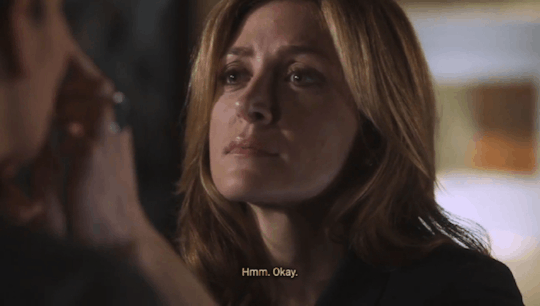
First, Maura and Jane display their close, intimate relationship as they survey the crime scene. Both Maura's immediate defence of Jane as she chastizes Korsak for not warning her it was a Hoyt-like crime, and Maura setting Jane's broken nose present them as intimate.
This is placed almost immediately next to their meeting Dean for the first time, reinforcing him as a stranger, even an interloper onto that scene of intimacy. Maura indicates her interest in Dean non-verbally (which reads as intimate too), and further, she reads the potential for Jane's territorial behaviour to emerge and both gives a little warning and phsyically steps between them.


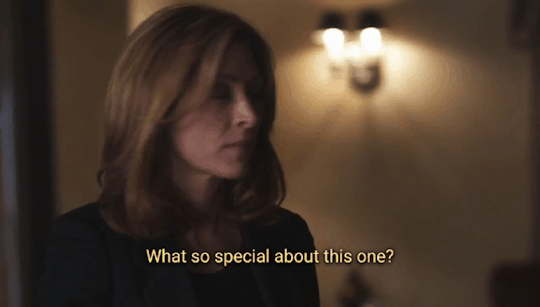
Because of Maura's displays of intimacy and knowledge of Jane, Jane's response of outright aggression becomes more meaningful. Her posture shift does not only indicate a desire to threaten Dean's intrusion onto her crime scene but also Dean's intrusion into her intimate connection with Maura. Jane slants herself as if she's offended she's not an option.

Um... what is that thing about how you point your feet at the person you're most engaged with in a social situation? There has to be some meaning about where you point your pelvis...
Anyway, later scenes show us what Jane looks like when she's inviting romantic attention from men, and that involves her making herself smaller, making herself look less sure and aggressive, and leaning into traditional femininity. It's quite the opposite of what she's doing here, which I read as laying a claim... on the crime scene but also on Maura.

This is fascinating because, at first, I'd mistakenly believed it was Maura's queer jealousy that cropped up first, but this reading actually presents the opposite scenario.
This kind of framing comes up again, in this same episode, when Jane flees her apartment to stay at Maura's for the night. In Maura's guest room, Jane spies to see who Maura's nighttime visitor is, and then they have that exchange on the bed. The question of Maura's potential attraction to Jane comes up in the same brief span as the question of whether or not Maura has ever had a crush on the same guy as her best friend, intermixing these two potential attractions in such an interesting way.


It's almost like Jane is giving mixed signals here. She's asking Maura if she's attracted to her only in joking terms... because for some reason she doesn't feel like she can ask it seriously. But as their conversation turns towards Dean, and their supposedly shared attraction to him, I'm instantly reminded of the concept of some of Eve Sedgwick's work on homosociality and erotic triangles and how those theories have impacted my own understandings of love triangles in media. I'm going to way oversimplify it here, but essentially when two people of the same gender are vying for the attention of the same different gendered love interest, I'm more interested in the bonds presented between the two of the same gender — whether it's rivalry, intimacy, potential sexual attraction (especially when it's wrapped up in taboos, social norm violations, and repression), or some complex mix of the three. And just, wow, this connection between Jane and Maura is ripe for that kind of reading. It becomes really easy to read Jane's "pursuit" of Dean as a way of attaining conventionality through a connection that also engages her potentially unconventional attraction to Maura (and a resistance to admit that) by being with someone Maura finds attractive. Jane isn't really showing attraction to Dean, but she is very much going for the closest conventional relationship she can that partly expresses her repressed, "taboo" attraction. (I wonder now if this contributed to my reading Jane specifically as a lesbian, rather than bisexual, through most of the series, but that's a bit besides the point).
Doesn't this just make it so interesting how Maura had physically insinuated herself between Jane and Dean?
It's also significant for me that when Jane does pretty herself up with lipstick to go see Dean, she rebuffs him and is consistently iffy about him despite the so-called attraction she admits to Maura. It's also very much giving that repressed queer experience of having a crush on a girl and being so jealous of her relationship, but not being able to conceive of yourself as queer, so mistaking that for a crush on her boyfriend. You know?!
Later on in the show, when Jane is with Dean, there is still so much to this dynamic. Maura calls Jane on a date with Dean and she immediately runs to meet her, choosing her, prioritizing her. It's what makes it so sick-inducing when, after Maura reveals that she doesn't know if she wants Jane to catch Paddy, Jane goes on to tell Dean the FBI agent with a hard-on for catching criminals at all costs about his presence in Boston in a specifically romantic scene. You know, which then causes a chaotic scene that requires Jane to shoot Paddy after feeling up his daughter to set her up on a sting... There was so much wrong with that, I'm honestly surprised there was a moment in Maura's tirade for her queer jealousy to slip in, but it does.

Hell if they're not in big fat queer love with each other, whether they admit it or not.
#rizzoli and isles#rizzles#jane rizzoli#maura isles#character analysis#they are literally gay from episode ONE#p.s. the draft title of this post was quite literally: why is the dean arc so queer jealousy?!#i just removed like TEN typos from this... i get away with too much
198 notes
·
View notes
Text
The biggest Easter egg yet
I’ve been meaning to address this for a while now, but @camdenleisurepirates gave me the final push after reading my piece on Gabriel’s cross. Huge thanks for that morsel of motivation, my ADHD brain loves you.
This is going to be yet another long read, although not as extensive as my bookshop statues meta. Still, better get yourself some hot chocolate or another drink of your choice and make sure you’re comfortable!
Now, remember the X-Ray interview with Peter Anderson on Easter Eggs in the opening animation he created for the second season? Forget red herrings, apparently our fandom has a literal red phone box! I’m convinced that this whole scene is a one big — the biggest, actually — Easter Egg, and I’ll explain why step-by-step.
The red phone box Crowley used to warn Aziraphale about the Antichrist and the following Armageddon in S1, the exact one where he left change for an emergency call, seems important enough in terms of the future S3 plot, but there’s so much more going on in this frame. Not only the lift.
The angels
At the very start of this sequence we can see a fragment of an elaborate bridge guarded by cherubs sitting on two columns, maybe globes, leading to a distant structure built over a literal mountain of trash — all elements of the S1 and S2 openings which were consciously picked out by the animators and put together in a very ominous pile.
Ready for some scavenging?


In the Gabriel’s cross meta, I already mentioned the importance of Ponte Sant’Angelo in relation to the ex-Archangel’s statue. Now it’s time to widen our perspective and focus on the full picture — quite literally. Apparently the bridge from the opening sequence has ten statues of angels, exactly as the Italian historical monument.


First things first though: the two big cherubs guarding the entry to the bridge might seem familiar to some of you. While they’re obviously not copies of the same statue, a very similar pair of brass cherubs is placed in Aziraphale’s bookshop to symbolize Aziraphale and Crowley. And looking at the screenshot above and the way they sleep or sulk with their backs turned on each other, they are most certainly not talking. The addition of more than one set of eyes is a lovely reference to biblically accurate angel memes though.
If we assume the traditional left-right positioning of the characters, Aziraphale is on the left and Crowley is on the right. Directly behind Aziraphale we can see a ship named “Good Traits”, but in reverse — kinda sorta confirmed by the animator Peter Anderson to be connected to the concept of the seven deadly sins on Twitter. Same that was mentioned recently by Neil in one of his asks.

The presence of Gabriel — a renegade Archangel wielding a broken cross — on the right, Crowley’s side, seems to match this theory. It could also support one of the possible interpretations of the very last bookshop shot in the S2 finale.
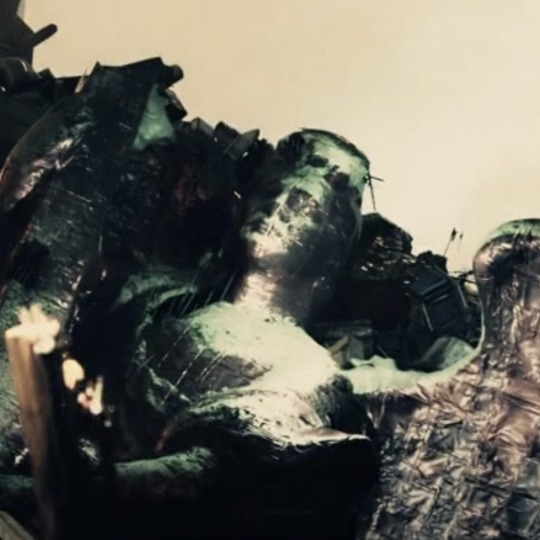
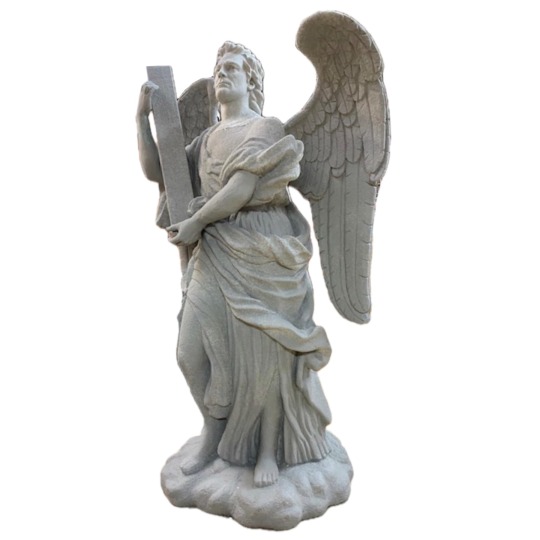
Out of all ten statues, Angel Carrying the Cross by Ercole Ferrata is considered inferior to the others on the bridge in that it appears to be a two-dimensional relief sculpture rather than an unbounded three-dimensional artwork, which seems to match Gabriel’s first impression as a character.
The inscription on the statue reads, “Dominion rests on his shoulders" — that is the weight of the cross that Christ was forced to carry through Jerusalem before being crucified. Even though Gabriel’s burden partially disappeared, the whole bridge and its environment is covered with crosses. It’s clear that we’re looking at a direct parallel of Via Crucis, the Way of Sorrows.
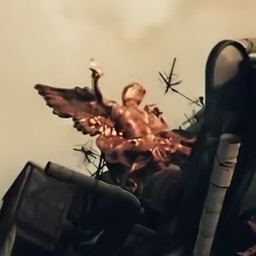
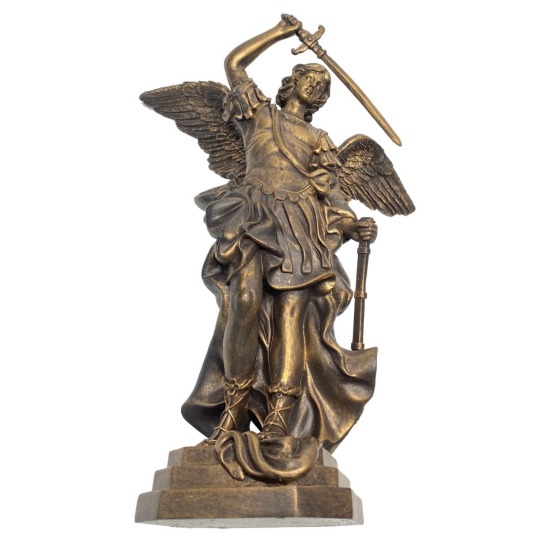
Towering over the Italian bridge, at the very top of Castel Sant’Angelo, is a statue of Archangel Michael, seen as the golden angel on the top left part of the trash pile. Aziraphale’s side, perhaps as his assistant, perhaps a rival? Legends of the Jews mention Michael as the chief of a band of angels who questioned God's decision to create man on Earth. The entire band of angels, except for Michael, was condemned to Fall — which could explain why they have such a good access to the Grapevine That Obviously Doesn’t Exist. And whatever’s going on between Michael and Dagon, perhaps.
In Roman Catholic teachings, Michael has four main roles or offices. Their first role is the leader of the Army of God and the leader of Heaven's forces in the final triumph over the powers of Hell. Viewed as the angelic model for the virtues of the spiritual warrior, their conflict with evil taken as the battle within. The second and third roles of Michael deal with death. Their second role is that of an angel of death, carrying the souls of Christians to Heaven. Michael descends at the hour of death and gives each soul the chance to redeem itself before passing; thus throwing the devil and his minions into consternation. In their third role, Michael weights souls on perfectly balanced scales they are often depicted with as their attribute. In their fourth role, Michael appears as the guardian of the Church. Might be the reason why they’re the closest to the building on top of the mountain.
It looks like Michael lost their sword though, just like Gabriel lost a part of the cross he was supposed to carry. The sword in question was supposed to be used to slay the dragon — Satan, the Adversary — according to John of Patmos and his Book of Revelations.
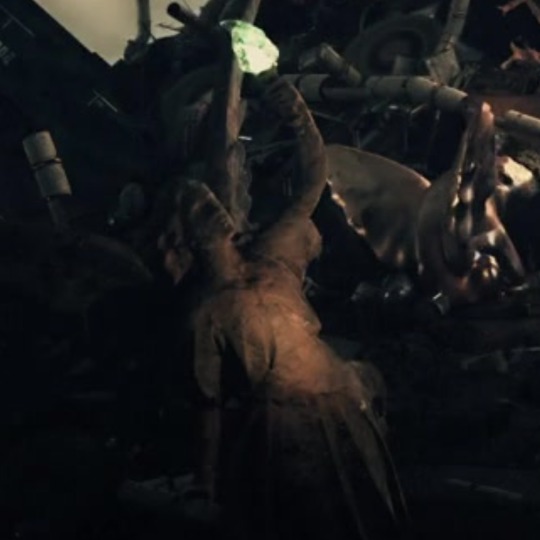
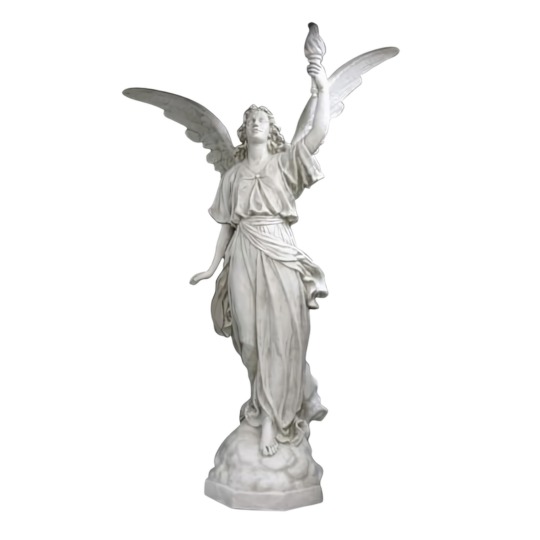
Speak of the devil: interestingly, there are two copies of an anonymous variation of the Angel of Light statue appearing twice on both sides of the bridge. Both the title as well as the statue itself seem like obvious references to one (former) angel literally called the Lightbringer, Lucifer. Perhaps one of them is representing his son, the Antichrist, instead, with the both of them helping out the Ineffables on two opposing — or perhaps only parallel — sides of the bridge?

The light carried by Lucifer appears to be green, a color used in the series as a visual representation of Hell, but on the intertextual level might also serve as a reference to F. Scott Fitzgerald’s classic novel The Great Gatsby and the green light at the end of the Daisy’s dock symbolizing the undying love, desperation, and longing for an unattainable dream. In the story, the color represents the limitations of power and money. Not surprisingly, the novel appears on Jim’s bookshelf and is part of the Good Omens book club — a list of personal recommendations from Neil Gaiman and Douglas Mackinnon for the fans to catch up on before the next series.
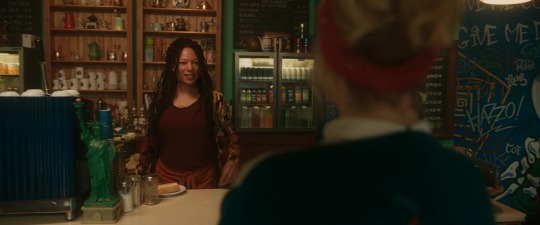
Last but not least, the possible connection to Libertas as the inspiration for the Statue of Liberty, shown multiple times in S2 as a foreshadowing of our character’s trip to America in S3. The related quote of Patrick Henry “Give me liberty or give me death” becomes even more relevant if we consider how the motto of the French Revolution was sometimes written as Liberté, égalité, fraternité ou la mort (“Liberty, equality, fraternity or death”). A lesson surely learnt by a certain angel back in 1793, when he was held prisoner for the last time before being forcefully taken Upstairs in the Final Fifteen.

The bridge and the castle
Okay, these are the basic observations. Now a brief historical overview and we will reach the fun bit in a jiffy.
Have you ever wondered about the meaning of this whole complex? It wasn’t always angelic, but named after a Roman noble dynasty. The Aelian bridge was built by the Emperor Hadrian in 134 AD to span River Tiber from the city center to his mausoleum. With time, the remains of more emperors were put to rest in there, until it was plundered and destroyed in a war. Then the remaining structure was transformed into a military fortress and a castle serving as the papal residence in times of war.

The Papal State also used Sant'Angelo as a prison; the Renaissance philosopher Giordano Bruno was imprisoned there for six years. Executions of the inmates were performed in the small inner courtyard, but they weren’t the only deaths in the area. On the other side of the bridge, in the adjoining Piazza del Ponte, under the watchful eyes of the stone likenesses of two saints, the public executions were held, and the heads of the criminals were brought onto the bridge and exposed to public view there.
As a prison, the former mausoleum is also the setting for the third act of Giacomo Puccini's 1900 opera Tosca. Long story short, the eponymous heroine convinces her lover to feign death so that they can flee together. Unfortunately, they are betrayed and the firing squad shoots at him with real bullets instead of blanks. Tosca believes in the quality of his acting performance rather than the truth, and when the realization hits her, she leaps to her death from the Castel’s ramparts.
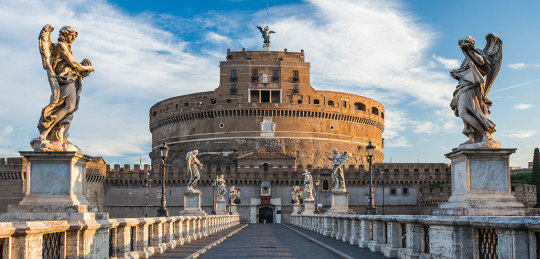
After Nero’s bridge was destroyed, the travelers were forced to cross this bridge as the only direct route to the Vatican and St Peter’s Basilica, earning it the nickname “the bridge of Saint Peter”. That’s why in the 16th century Pope Clement VII erected statues of Saints Peter and Paul at the ends of the bridge, guarding it as they are supposed to protect the entry to Heaven.
In 1688 the bridge was embellished with ten angel statues, five on each side of the bridge, carrying Arma Christi, the Instruments of the Passion. The Good Omens characters represented by those statues in the opening sequence might be other instruments of Christ’s suffering as parts of the system that needs to be overthrown or replaced.
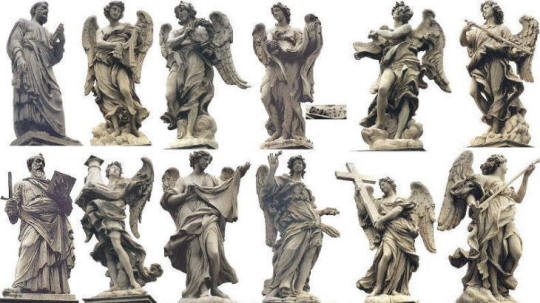
One angel appears particularly important in the context of both the bridge and the Second Coming — Saint Michael the Archangel.
Legend holds that the Archangel Michael appeared atop Hadrian’s mausoleum, sheathing their sword as a sign of the end of the plague of 590, thus lending the castle its present name. A less charitable yet more apt elaboration of the legend, given the militant disposition of this particular Archangel, was heard by the 15th-century traveler who saw an angel statue on the castle roof. He recounts that during a prolonged season of the plague, Pope Gregory I heard that the populace, even Christians, had begun revering a pagan idol at the church of Santa Agata in Suburra. A vision urged the Pope to lead a procession to the church. Upon arriving, the idol miraculously fell apart with a clap of thunder. Returning to St Peter's by the Aelian Bridge, the Pope had another vision of an angel atop the castle, wiping the blood from his sword on his mantle, and then sheathing it. While the Pope interpreted this as a sign that God was appeased, this did not prevent Gregory from destroying more sites of pagan worship in Rome. In honor of the vision and Michael, the bridge was renamed in their name.

What if the procession from the opening sequence was meant to imitate the procession led by the Pope from the legend? What if Aziraphale, now officially a Supreme Archangel, Commander of the Heavenly Host, is the one actually leading it, with Crowley finally at his side as his partner and second in command, just like it was proposed by him in the Final Fifteen?*
What if by some reason, maybe personal ambition, maybe just a tragic coincidence or situational necessity, there really was an impostor in Heaven, and Metatron — the so called Voice of God who seemingly doesn’t speak up for Herself since Job’s test — has been playing a winged version of the Wizard of Oz all along?
It would make just the perfect sense if not for one tiny detail. The procession we see on the bridge is actually led by Crowley, which doesn’t fit the parallel at all — unless it’s actually a proof of an ongoing body swap, as the mismatched names of the actors could also suggest?
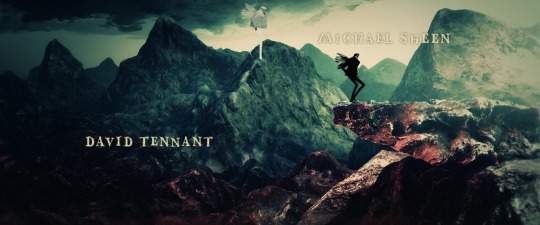
The mountain of trash and the bookshop
The symbolic mountain of trash we can see Aziraphale and Crowley climb is a reference in itself. To an actual mount called Zion, believed to be the place where Yahweh, the God of Israel, dwells (Isaiah 8:18; Psalm 74:2), the place where God is king (Isaiah 24:23) and where God has installed king David on his throne (Psalm 2:6).

In a literal sense, it’s a hill in Jerusalem, although the sources refer to three different locations in different contexts — although for the purpose of this meta the Upper Eastern Hill (Temple Mount) makes the most sense. Its highest part became the site of Solomon's Temple. The same King Solomon the rituals in Freemasonry refer to. Masonic buildings, where lodges and their members meet, are sometimes called "temples" specifically as an allegoric reference to King Solomon's Temple, not actual places of worship. And Aziraphale’s bookshop is built around Solomon’s Magic Circle.
In a metaphysical sense, and especially in the context of the Christian New Testament, it is also believed to be a part of Heaven — the heavenly Jerusalem, God's Holy, eternal city. Christians are said to have “(…) come to Mount Zion and to the city of the living God, the heavenly Jerusalem, to an innumerable company of angels, to the general assembly and church of the firstborn who are registered in heaven” (Hebrews 12:22-23 cf. Revelation 14:1). Just like the procession were following in the opening sequence.

There’s been some speculation whether the lift on top of the mountain could symbolize Aziraphale’s bookshop, or, more specifically, the oculus in its centre. If you look closely at the enhanced screenshot, you can see that the dome isn’t made of glass and that it looks like a tower (a church’s bell tower, perhaps) more than a whole building.
And there is an actual doorway in there — not like the modern lift doors — opening up towards the source of that white, heavenly light. And what kind of enlightenment can you usually find up in the skies or heavens?

We’re welcomed to crack open the doors to the Heavenly Sanctuary — the Most Holy place, Sanctum Sanctorum, the Holy of Holies — to undraw the final curtain and finally stand eye to eye with God. Who knows, maybe even ask some questions or listen to some answers.
Or, at the very least, to meet one of Her forms known as Jesus Christ. Because that’s precisely where he serves as our (humanity’s) Mediator and the Holy Priest after his Ascension to Heaven. The structure at the top reminds of some temple architecture seen in Antiquity and Christianity.
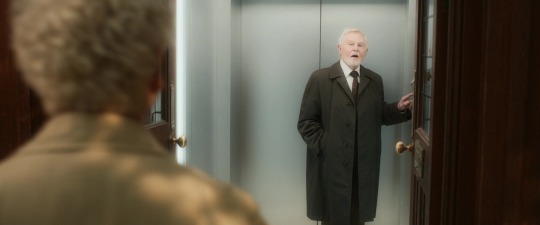
The Catholic Church considers the Church tabernacle or its location (traditionally at the rear of the sanctuary) as the symbolic equivalent of the Holy of Holies, due to the storage of consecrated hosts in that vessel and their meaning as the Body of Christ. Tabernacle is commonly marked with a red light turned on and off depending on His presence or lack if it.
Looks like He’s already in the area, one way or another, keeping eye on some things.
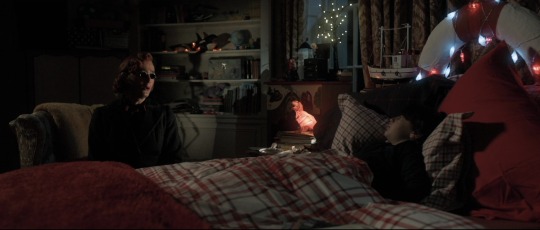

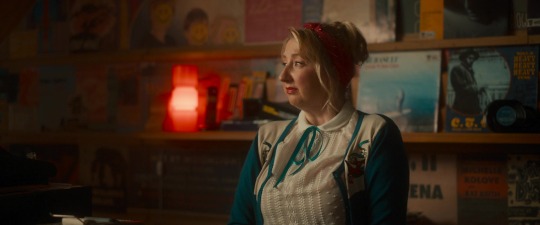

Are we following a procession of believers happy to embrace their one and true Savior? Or are they actually protesters on their way to dethrone the authority and the system?
Guess we will have to wait and see.
#the good omens crew is unhinged#everything has a meaning#title sequence#angels everywhere#archangel fucking gabriel#gabriel’s statue#bookshop statues#statues update#ponte sant’angelo#let there be light#good omens analysis#good omens meta#bible fanfiction#yuri is doing her thing
149 notes
·
View notes
Text

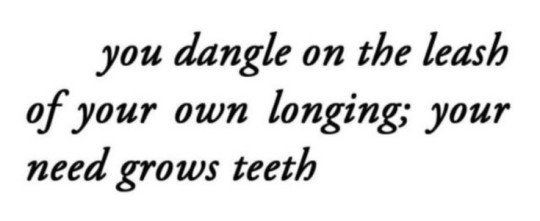
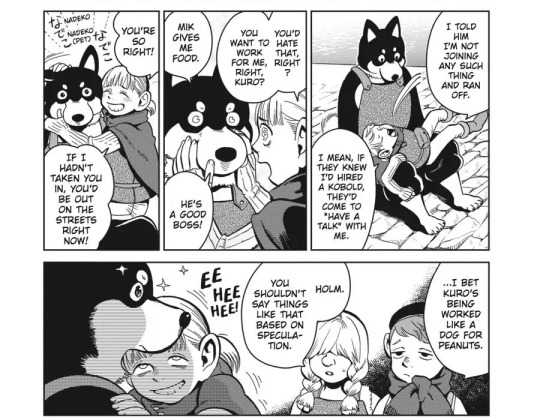



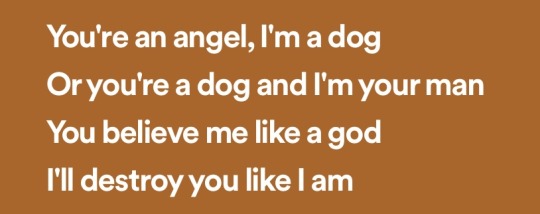


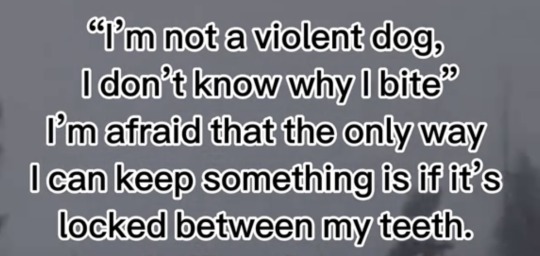

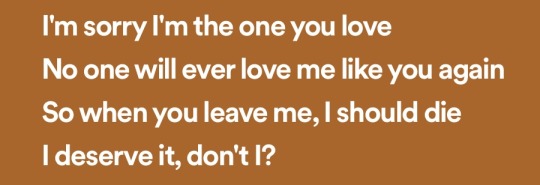


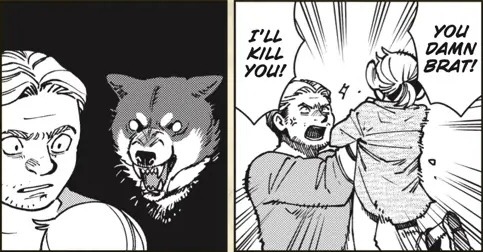
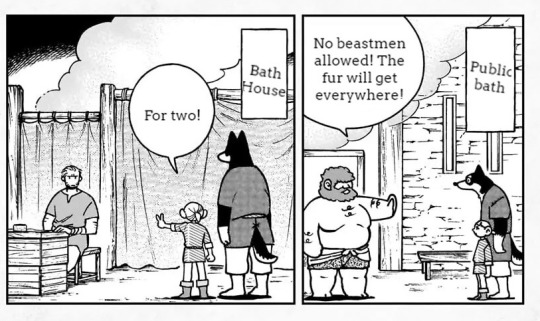

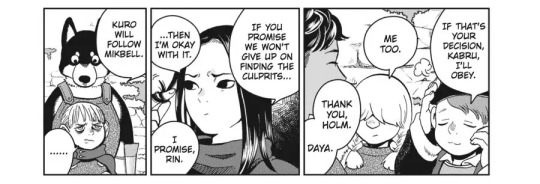




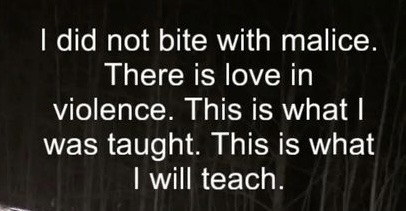

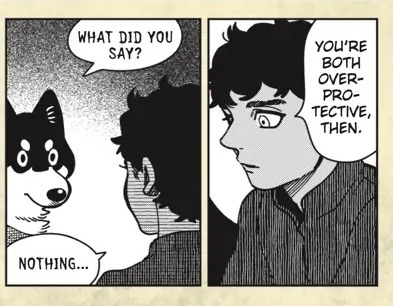
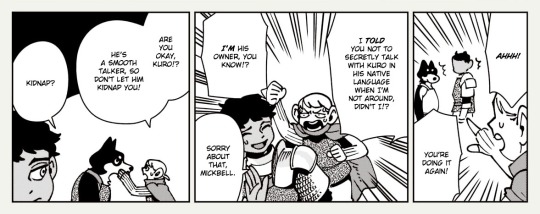

Canines
The hand that feeds
Mickbell Tomas & Kuro
Dungeon Meshi
^ 1: Ink-the-artist, I will remove my teeth / 2: Margaret Atwood / 3: C.S. Lewis, The Horse and His Boy / 4: Mitski, I’m your man / 5: Ojibwa, I love you like a rotten dog / 6: KotOR II / 7: Stardrop, Everything that’s ever been mine is covered in teeth marks / 8: Sodikken, People Eater / 9: Mitski, I’m your man / 10: maxime., The life and death of a dog / 11: Mitski, I bet on losing dogs / 12: maxime., The life and death of a dog / 13: hun, I did not bite with Malice / 14: C. Michael Davis, Don't Pet the Dragon / 15: Mitski, I’m your man
v 1: Early versions of the myth as in aeschylus orestes / 2: Ink-the-artist, I will not remove my teeth

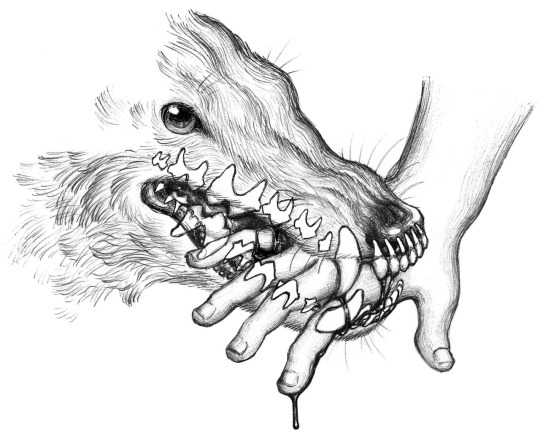
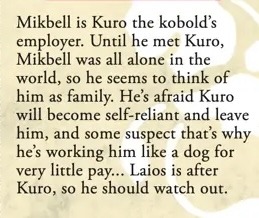
#Yeahh i’m workng on a mickbell & kabru party analysis oops#I’d bleed for anything if it held me the right way. Even teeth#dungeon meshi#delicious in dungeon#Mickbell tomas#kuro#mickuro#mickrin#It’s on topic in my heart#The red means I love you…#The duality between the care & devotion and the hurt & isolation is really what gets to me#Traumabonded kittens highkey#Tw#cw#cw abuse#tw abuse#Web weaving#web weave#webweaving#I hit 30 pics :( would have added more if i could#Idk even anymore… Pls tell me you see the vision#Mick obvi loves Kuro a lot but this was meant to focus on the unhealthy side if that wasn’t obvious. Abuse tactic of isolation etc etc#People always leave. doesn’t matter how or why but his parents his sister everyone he’s never enough to stay#and that’s why he thinks he has to trick Kuro into thinking Mickbell’s the whole world or he’ll discover that there’s more out there.#Stuff that’s worth leaving him for. He has to make the world scary and unknown and not pay him and not let him have connections#That’s why he doesn’t want people to have a choice!! Either Mickbell doesn’t care about you or he’ll make sure you can never be without him#and there being a third option/outcome in this freaks him out!!!#Some of these should be called ‘No Title’ instead but I have bad academic crediting etiquette this looks cooler sorry#He’s scared of course he bites. There’s only throwing bones when feeding a stray. So bare your teeth and chew me up
162 notes
·
View notes
Text
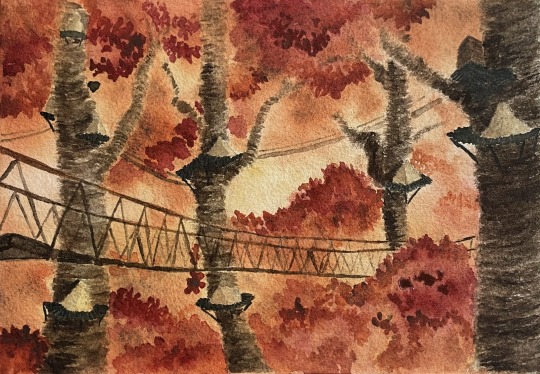
Painting Jet's forest always makes me think of what a tragic character he is. Throughout the series, the dominant colors in the episode usually correspond to the nation they are in (the Water Tribe episodes have lots of blue, the Earth Kingdom episodes have lots of brown and green, etc.) but the episode "Jet" stands out because it's so red (Fire Nation) when they're in the Earth Kingdom. In a way it symbolizes how Jet and the Freedom Fighters don't move past their trauma, they live in a forest surrounded by their enemies colors. I think it's an interesting detail.
(The orange and red paint I use for the trees in Jet's forest are called Flame and Dragon's Blood, respectively.)
Watercolor on paper, 5”x7”
#atla#atla fanart#atla scenery#atla landscape#atla watercolor#atla jets forest#atla jet#once again#sorry jets not actually here#its just the episode title#watercolor#watercolor fanart#watercolor painting#avatar#avatar the last airbender#atla analysis#atla jet analysis#the way this show uses color is interesting#i hadn't really noticed before i started painting some of the scenes#earth kingdom#atla earth kingdom
133 notes
·
View notes
Text
I was listening to Godhunter by the Aviators, and it got me thinking about Jim again. But specifically about what is provably the most creative kill of the series - his final stand against Bular. It was stunning visually and really good choreography wise, but it got me thinking about another fight involving Bular. One of the very first things we see in the entire franchise.
The fight between him and Kanjigar. And why I think Kanjigar wouldn't even think of doing what Jim did in that final battle. It's fascinating how differently both trollhunters use Daylight, and I have my thoughts on it to share.
Let's start with Kanjigar. As we see in Wizards, he was a warrior long before getting chosen by the amuket, and it's safe to say he has been trained in using a sword. And so even when he fights with Daylight he treats it pretty much the same as a regular blade.

Like over here. He burns himself to reach for the sword, when we know that Daylight can be teleported straight intk your palm. But it's not something Kanjigar would have had to use often because, as it's established, he is an excellent warrior. He probably is disarmed very rarely, if at all.
Not our Jim, though. He is a scrawny sixteen year old fighting giant creatures of living stone. The sword is flund from his hands constantly. And so he had to learn how to get it back in an instant or die. He is doing everything in his power to keep up with beings much stronger, bigger, and faster than he is, and so he is using this trick a lot.
So for him, the sword is much less of a physical thing, is what Im trying to say. And that allows him to come up with an idea for something like this:

Like he says in this scene, he is not a troll, and he doesn't fight like one. What a genius way to write a protagonist going against much more traditionally powerful opponents.
#literary analysis#trollhunters#tales of arcadia#jim lake jr#bular#bular the butcher#bular the vicious#he got two titles damn he is special like that#kanjigar#kanjigar the courageous
175 notes
·
View notes
Text


REGENT: Whoo-, yeahp, that is a longer one. I’ve said it before and I’ll say it again; never apologize for these longer ones. With Titles being so intrinsically tied to our personalities, more information is always good information.
REGENT I’ll say from the get-go, you’ve got the Aspect pretty good down, even with much more complex traits. Hope is the Aspect of personal beliefs, and as far as Aspects go, I reckon it might be one of the most corruptive and potentially damaging. And I say that having damn-near mastered the Void.
REGENT: Those bound to Hope often conjure this ideal image of themselves; “I’m an adventurer”, “I’m the only light against the darkness”, “I’m a suave-ass greaser”, “I am the embodiment of a King’s measure”. These conceptions can be extremely difficult to shake, even when they wind up souring and poisoning the Hope-Bound’s existence.
REGENT: And yet, just as dangerous as these ideals can be to them, a Hope player can find immeasurable power in them. Just as much as the Hope player shapes these ideals that they hold to be true, so too do the ideals shape the person who made them to accurately reflect their beliefs.
REGENT: The adventurer picks up the moxxy and intuition, the bastion of hope finds the spark of power, the King emanates virtuous authority......We will not talk about the results of the greaser.
REGENT: And this duality of both boon and danger, the ideal becoming reality, and what that means - I think, is the crux of a Hope player’s evolution. Which is, ultimately, a long-winded way of saying “you’re right on the money, here’s some additional thoughts to support it”.
REGENT: Moving onto Class, it’s a bit of a tossup; my gut instinct is telling me that it’s likely an Active Class, since a lot of the traits line up to be self-centric - the singleminded pursuit of their ideal, the supposition that they’re being held back...
REGENT: But, with the knowledge of that latter point, part of me wants to lean towards Bard, due to their greater strength often being inhibited in some way. However, a similar trait rings true with the Knight, which is an Active Class.
REGENT: If I had to say, I’d give my gut the benefit of the doubt and say Bard. Though Passive, a Bard can command worldshaking power - but are often inhibited by the natures of their Aspects. It is worthwhile to note that most of the Bard’s shortcomings come from a lack of conviction or adherence to their conviction - fucking dammit I just said I wasn’t going to talk about Cronus...
REGENT: Whatever. From my observations, Gamzee’s convictions - those of his dread harlequin god, his rulership over others and the subjugation of lower blood castes, were inhibited by his idiocy and willing consumption of what basically amounts to fuckloads of sleep medication and emotional suppressants.
REGENT: Whereas Cronus’ convictions, if one could call them that, are constantly undermined by his own scummy nature. His desire to buddy up to people - or more specifically, have them fawn over him - is always undercut by his own tendency to abuse and harass others, interjecting where he isn’t appreciated.
REGENT: And I will say, as much as I loathe talking about Cronus, I will find it interesting to note that here, we have a similar case - a Hope-Bound Bard being the biggest thing holding themselves back.
REGENT: So, long-and-short of it, judging from the extant personality traits and issues this Achilles have to face, I would most confidently say that their Title would be the Bard of Hope. While little is known about Bards, it does have - at least to me - a satisfying closeness to Achilles’ growth, and as I stated before, you were exceptionally keen to begin with to pen him as a Hope player.
REGENT: Hopefully this helps, and that you find it to be accurate. And hey- my response was pretty fuckin’ long as well, so, don’t ever be shy about sending in long asks. I’d be quite the hypocrite to turn them away. .P
3 notes
·
View notes
Text
okay because people have shown up in my dms talking smack I'm going to make one blanket statement on the 1000 year loli chilchuck thing.
yes, there has been a problem with young girls being put in suggestive positions in anime with the "uhmmm she's actually a bajillion years old" excuse. yes, other characters don't treat chilchuck like an adult. yes, he is short with big eyes.
However, chilchuck consistently acts like a grown man. he- in both the manga and the anime- straight up just is an adult. He looks like an adult when he is any other race during the swaps in the manga. When the other characters get turned into half-foots they look similar to chilchuck. He is explicitly stated to have more dungeon and general life experience than laios, and he acts like it.
The 1000 year loli trope explicitly functions as an excuse to prey on people who are inexperienced and unable to advocate for themselves. Chilchuck is a parent, is a union organizer, has explicit boundaries that he enforces rigidly, and he is treated as an adult man by everyone who doesn't have a fantasy racism-focused character arc/issue.
I can see how if you haven't read the manga and seen that he has an established life that he later reveals (and haven't paid attention to him in the anime lol) you could get a mistaken impression about him. Marcielle does too in the source material! It's part of her character at the start of her arc that she has issues with longevity!
The thing that irks me a little about this interpretation is that it leans into the child-coded discourse that was prominent a while ago (she's short!!!!! but has boob???? ILLEGAL!!1!) and it does a disservice to the themes of infantilization as a policy maneuver hurting the working class.
I saw chilchuck and his labor advocacy for half-foots both as a metaphor for racism (obvious take ik) and for ageism.
The working gen z as a cohort are being infantilized and pushed out of job markets due to infantilization, similar to half-foots in the show. gen z is being maliciously portrayed as too young to vote, enter office, know themselves, know their rights, and take advantage of their resources. Simultaneously, child labor protections and protections against workplace abuse are being rolled back in the US. In Japan, young people are being worked to the bone for nothing and are becoming disenfranchised as a generation while simultaneously expected to be the labor faction that supports the postwar generations in their old age.
Chilchuck's being treated poorly I saw as a clever commentary on the ways infantilization allows for protections to be stripped away under the guise that "oh it's just a job for teenagers- they don't need more than minimum wage" or "let the kids rescue the economy! they're always complaining about that job market!" while simultaneously stripping away rights under the guise of protection- "We can't have that on the internet! think of the children!" "to protect these young people we must raise the age of medical consent for hormones/reproductive health decisions!"
Kui's work with this series spoke to me on many levels, and specifically, the infantilization issue touched me in a way that few other pieces of media have. The struggle to be taken seriously in a stem field as someone young, as someone female, and as someone who had a high-pitched voice to the point I did years of voice training to be taken seriously, chilchuck's character resonated. I (kinda) understand your instinct to think "SHORT! CHILD! RALLY THE MASSES AND KILL THE PEDOS!!1!" but in this case, it's misdirected- mostly because the author was trying to use this misdirection to prove something to you, the reader.
Kui consistently makes cutting commentary on modern issues, the show's take on food neutrality as its headliner, but also the author's takes on cultural issues and the environment (with a focus on our place in the food web as animals). I feel that reducing chilchuck's very conscious position as a tradesman and an activist discounted due to his apparent age down to "1000 year loli ewwww let's send this random tumblr user suicide bait" just displays a lack of critical analysis of the show and a level of disrespect towards Kui and the work as a whole.
TL:DR- stop sending me kys messages I'm fucking that old man
#dungeon meshi#chilchuck#suicide mention#fandom critical#dw I blocked the person but please refrain from telling people to kill themselves over chilchuck#hes a cool character but he is- still- only a character#long post#I know he's short but short people can still have sex#shocking I know#the person who sent me the message also has a lot of weird opinions of laios#like that he's too 'pure to think about sex'#broooo nooooo don't have weird opinions about autistic people being unable to consent!!#that's weird as fuck! autistic adults are still adults!!! quit infantilizing an already marginalized class!!#you're falling for the blatant misdirects that legislate away our rights!!#I get that it's just an anime it's not that deep#but at the same time the analysis skills are not skilling!!!#the reading comprehension is not comprehending!! the media literacy is not FUNCTIONING!!!#i am WORRIED ABOUT THIS#YOU WILL FALL FOR A PSYOP YOU ARE NOT IMMUNE TO PROPAGANDA#your words and deeds online are indicative of a deeper issue in your thinking that reveals a lack of understanding towards your own biases#you retain puritanical reactions and instincts despite carrying a new title#your understandings of the world are deeply and evidently shaped by flawed and cruel systems that you have failed to examine or grow out of#AUUUUGH please learn and grow as a person suicide bait helps nobody
94 notes
·
View notes
Text
ROTTMNT Theory: Donatello's Hidden Role

After rewatching ROTTMNT (shorts and movie included), I realized something about Donnie's character that I've hardly seen anyone mention, and I'm going to talk about it in depth here.
I'll assume you've already watched the series and dive right in, but spoiler warning under the cut in case you care about that.
Let me start with something seemingly off topic. Raph is the oldest of the four brothers, which landed him the responsibility of keeping his younger siblings safe when their father was unavailable. (Not trying to bash Splinter. He's gradually grown to be a better parent later on, but you can't deny he was fairly neglectful in the beginning of the series)
The constant pressure Raph went through was brought up in the episode "Anatawa Hitorijanai", and then the movie showed he still struggles with it now.

He's constantly shouldering the burden of being their family's sole protector, but is this the truth? What if I told you there are actually two protectors in the family? And that the other one was Donnie all along?
When you look closely, Donnie is surprisingly protective of his loved ones. I did a tally of how often each brother exhibits what could be protective behavior, and Donnie was in second place (29) after Raph (35). Some of these choices are debatable, but here's a bunch of examples as pictures.



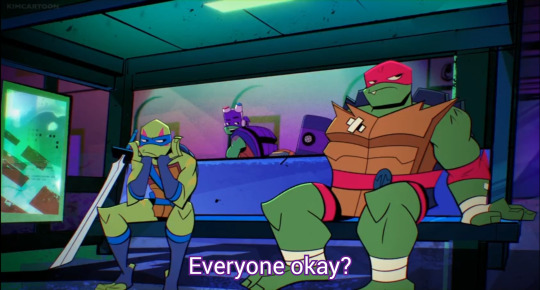
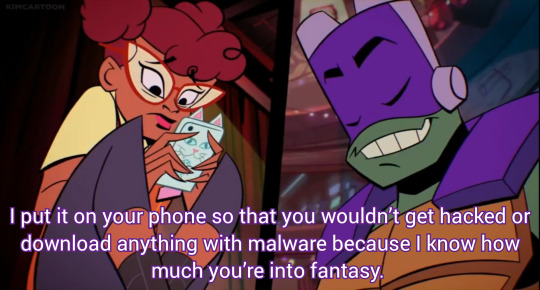
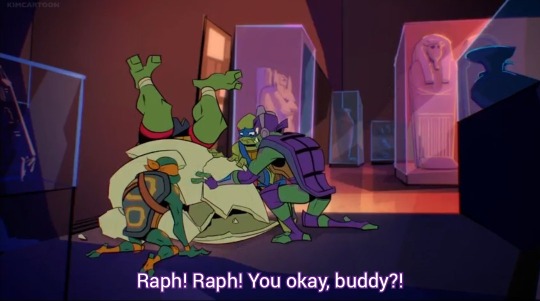
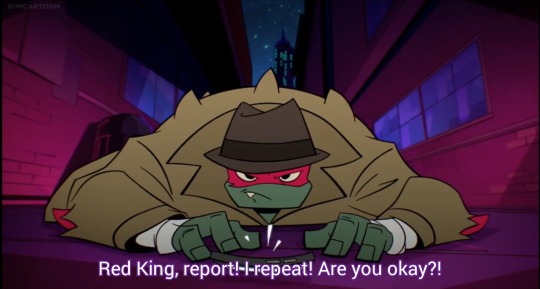



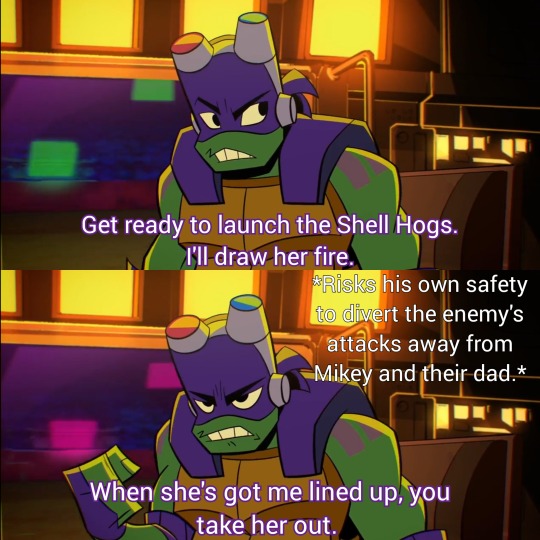


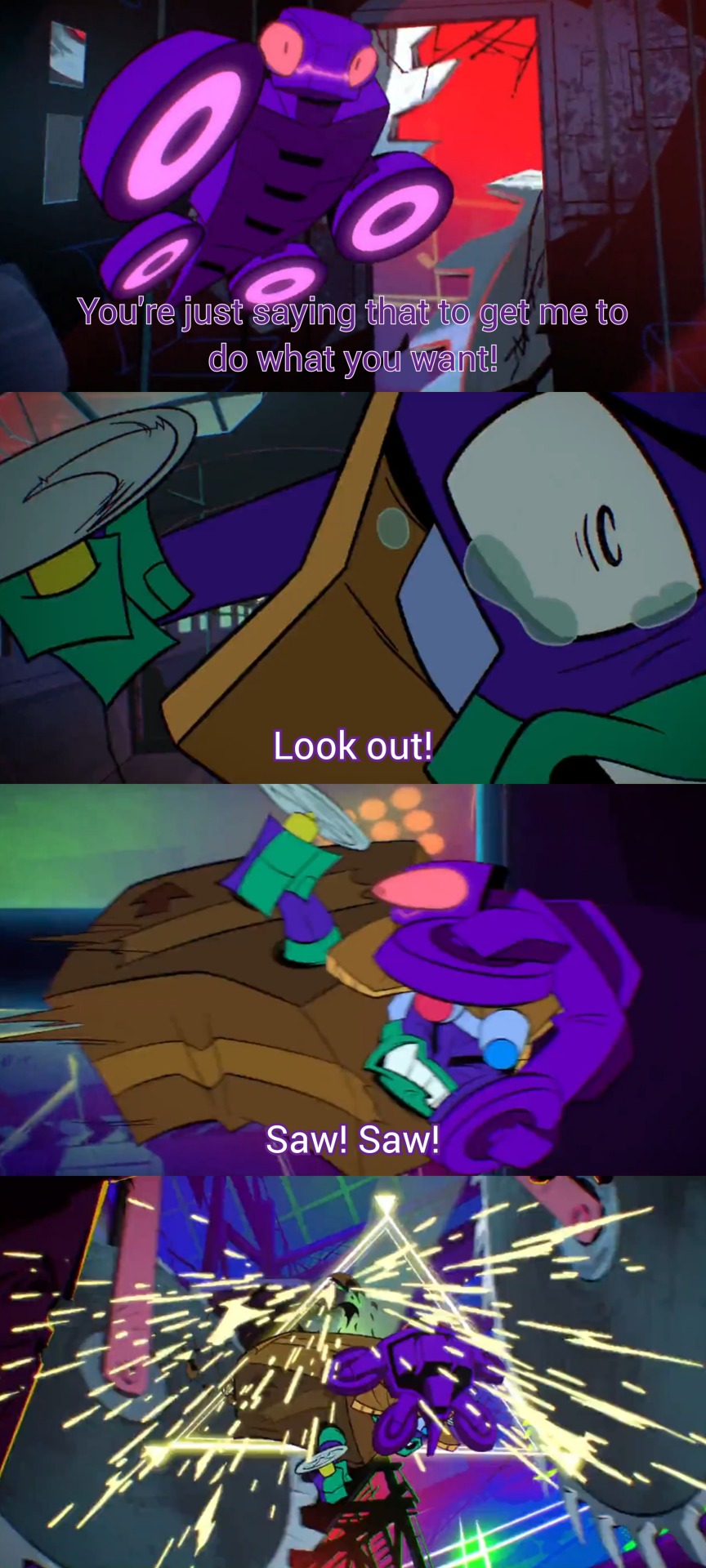

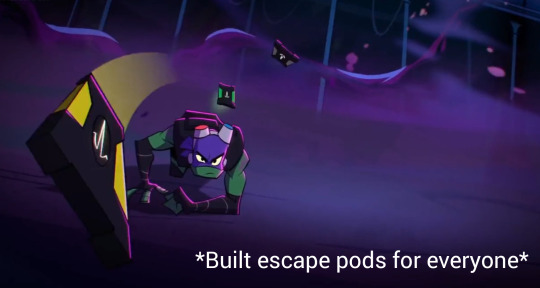
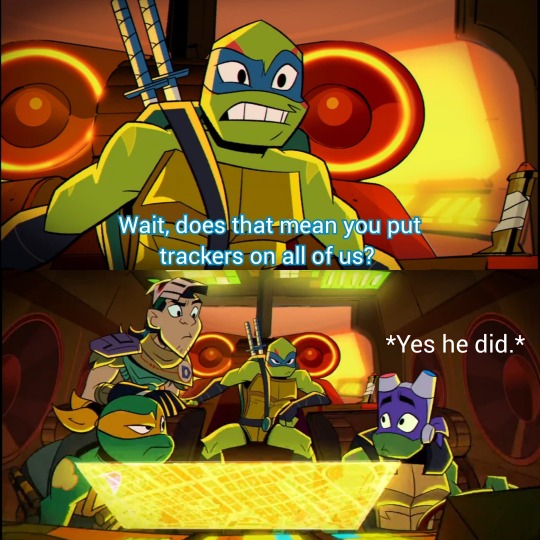

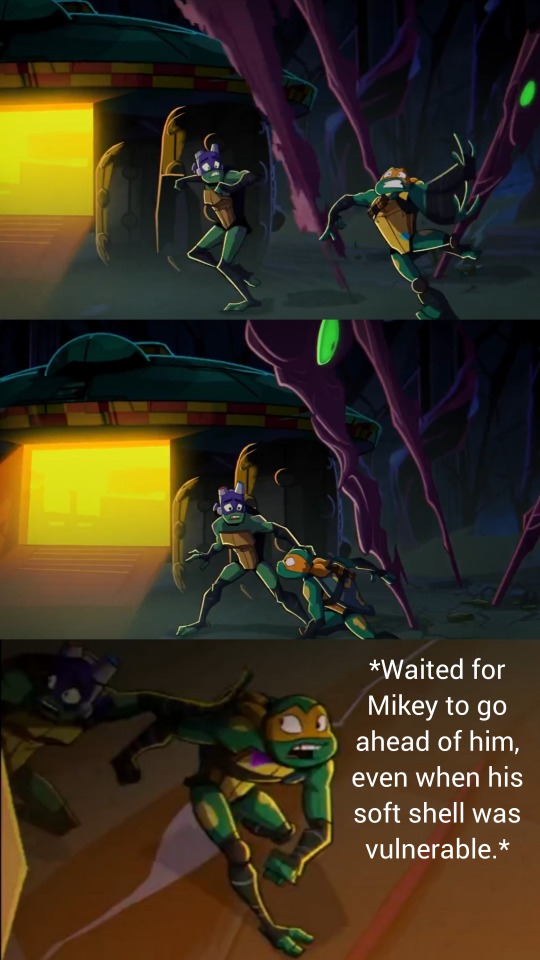

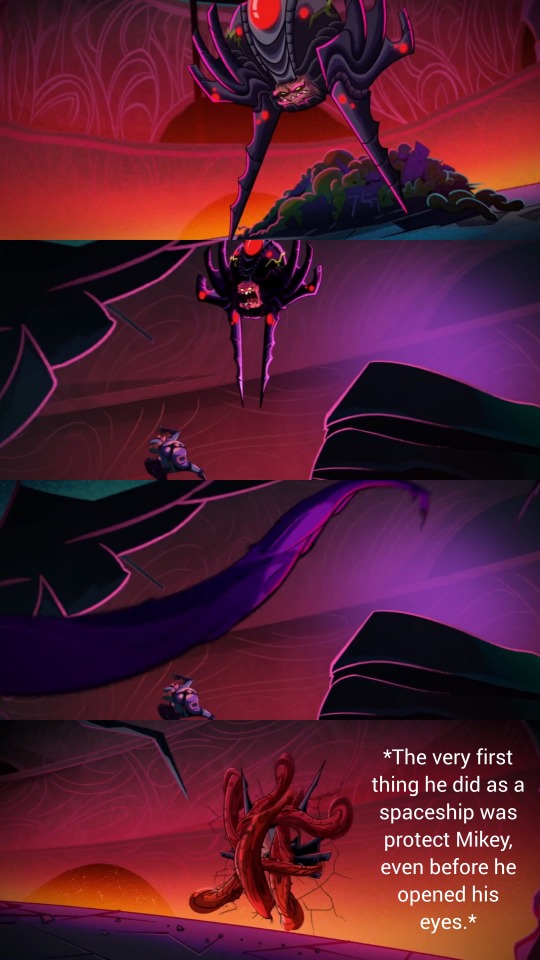
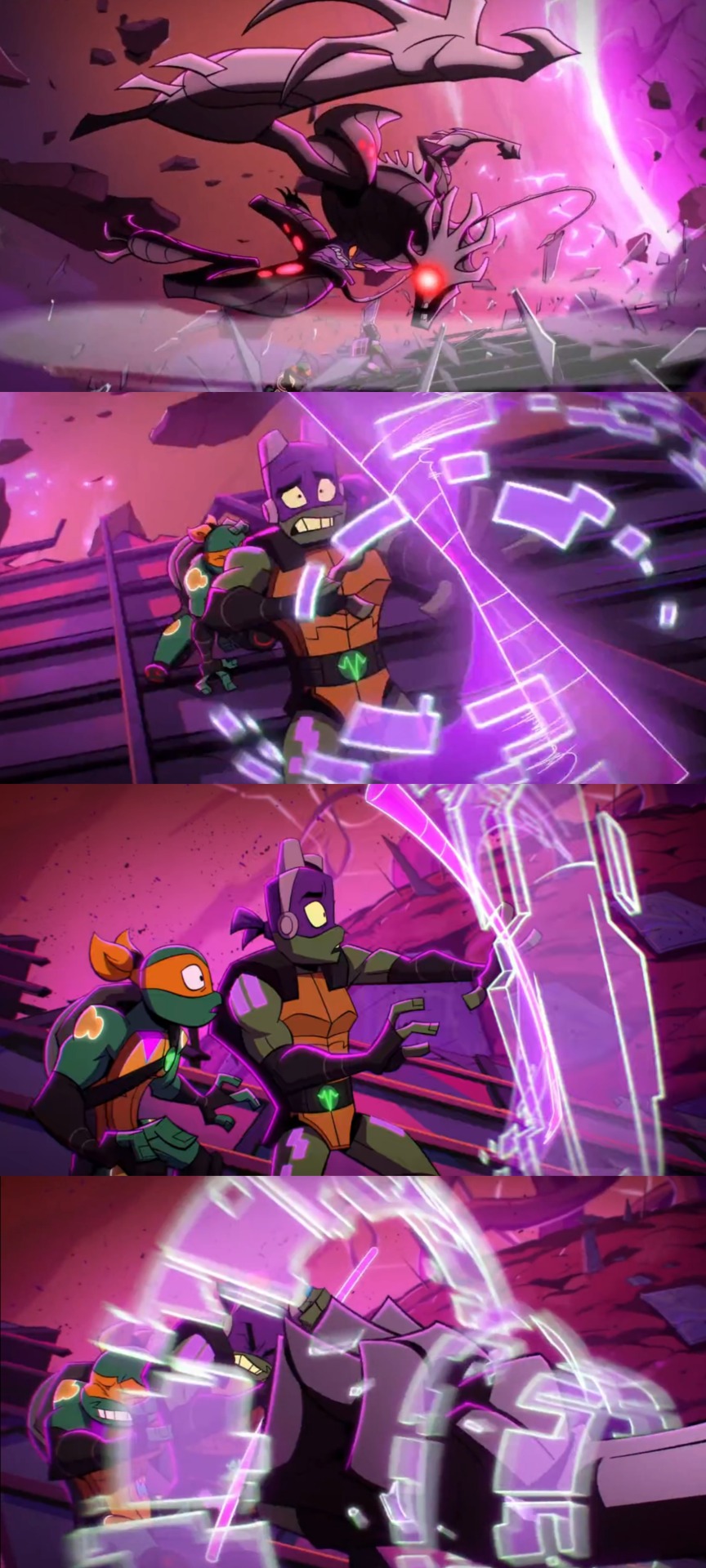


Would you believe me if I told you I still have a couple smaller examples I had to leave out due to the picture limit? And that's not even including the few moments where Donnie and Raph ever-so-subtly parallel each other.

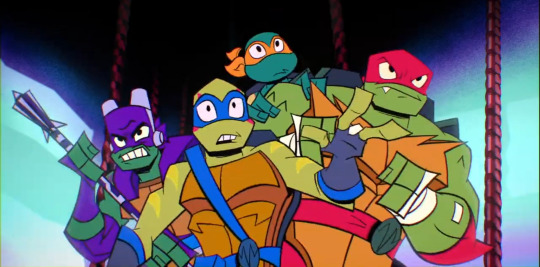

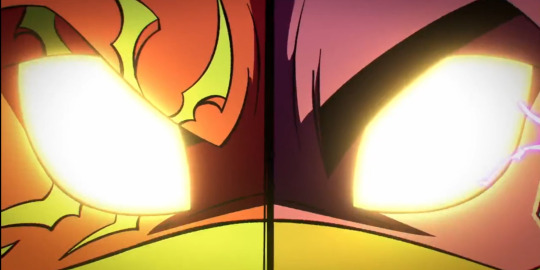
All things considered, Donnie and Raph aren't so different. Raph is the primary protector who faces the threats head-on with his physical strength, while Donnie is the secondary protector who tends to use more distant methods with his tech and wit. However, when push comes to shove, Donnie will also step up to take direct action when he deems it necessary.
They may be the brains and the brawn, but they both use their respective skills to defend and support their family.
#analysis#rise donnie#rottmnt#Donatello#Raphael#Sorry in advanced if the pictures have trouble loading#But seriously#I would love to see more of Donnie and Raph's dynamic if we get season 3!#Interestingly enough Donnie seems to be the least outwardly protective of Leo#Maybe the sibling rivalry makes him too prideful to show it as much#even though we know his protective instincts definitely extend to Leo as well#Alternatively there are a couple clues pointing toward Donnie seeing Leo as intelligent#so maybe he has a little faith in that?#The disaster twins are complex to say the least#I actually have quite a few extra examples I could share#but some of them are more debatable than others#I changed the tag from 'theory' to 'analysis' but I'm keeping the title the same
2K notes
·
View notes
Text
There’s something about Punz’s “You think I’m not his friend?” and Dream’s “Unless you’re saying that I’m not a person?” that just speaks volumes to me. Something about the questions that aren’t really questions but dares, calling out the unjust mentality at the root of their hurt.
A monster isn’t a person, nothing but inhuman evil. A mercenary doesn’t have friends, only loyal to money.
#Monster and Mercenary.#that’d be a good title actually… hmmm….#“just say you hate me. - “just say I’m not a person!#it hurts…#dreblr#dream smp#dsmp analysis#dsmp#this is fine#c!dream#c!punz#c!stagedduo#staged duo#c!drunz#my poor evil boys…#c!dream and c!punz
115 notes
·
View notes
Text
OFMD Critique: Finales, Writing Backwards, and the Importance of Building Relationships
Continuing on the rambling meta bc it turns out there are a couple of people that responded well to my initial thoughts...
Am I the only one that felt like the OFMD Season 2 finale suffered from the exact same problem as the Game of Thrones or the How I Met Your Mother Season finales? Well, not exactly the same, but lemme explain.
The treatment of Izzy Hands in Season 2 of OFMD feels like when they sat down to write this season, they wrote his death scene first (for whatever reasons that might be, though likely for the sake of Ed's arc- we're not going to address my feelings on THAT rn), THEN backfilled his arc for the rest of the season based on that, but then didn't rewrite his death scene to address the stuff that organically happened when writing the rest of the season.
Like, for example, I've seen plenty of people point out that the deathbed apology from Izzy to Ed doesn't really work (I fed your darkness) both in regards to the sheer imbalance of damage shown onscreen between Ed and Izzy, but also doesn't work as a "putting Blackbeard behind us" scene when Izzy figuratively (and literally, if you count him as part of the group with the cannonball) killed his half of Blackbeard in the storm scene in 2x2, with whatever parts lingering in him killed with the unicorn scene in 2x4. After this point, his arc and his focus has very, very little to do with Blackbeard or hell, Ed in general besides the couple of comments made to Ed and Stede that cement that Izzy is happy that Ed moved on and found someone that makes him happy.
Izzy's arc has left Blackbeard behind already. He has already hit the emotional beat that the finale wants to retread.
And then the other part of his deathbed comments to Ed- "the crew loves you, Ed"- makes no sense from the Ed side of things. The show built up an arc for Izzy that would make people care when he died, but that arc was literally about the crew literally putting aside their differences/fear/distrust of each other to help, support, and accept Izzy as their figurehead, their protector, their friend, their recovery, their family, their (insert positive symbolism/metaphor for all of the VARIOUS implied flirtations here).
What did they have with Ed? Other than his moments with Stede and Fang, what relationships were built up before Izzy's death? Calypso's birthday included no scenes of the crew interacting with Ed other than the short Archie/Ed/Stede convo at the beginning. We get none of him talking to them when prepping for the party. He spends 2x7 and 2x8 with Stede, only having scenes with Stede, never building anything with the crew.
THE LAST SUBSTANTIAL INTERACTION ED HAS WITH THE CREW BEFORE IZZY DIES IS THE "INFLUENCER APOLOGY" IN 2X5 (other than with Fang in the boat). Holy shit, I didn't even realize that until I got to this point in the meta. I had realized that something felt wrong/off about the "the crew loves you line," but I thought that it was because 2x1-2x3 cast such a long shadow on the rest of the season that it was impossible to escape. No, there were cracks in the back half of the season as well.
All of which is to say: if you have to kill Izzy (which you really, really don't, btw, it makes little sense in a show where pretty much every character has survived a near death experience with nary a scratch, but for the sake of hypothetical), there is a way you can pull it off: you have the crew at Izzy's side as he dies instead of Ed. You have their relationship with Izzy at the forefront, because their relationship is the one that matters at this point in the narrative. You have Izzy die trying to save one of them, not by random gunshot.
And then after Izzy dies, you finally give the crew their agency back. You let Izzy's death be the last straw in THEIR arcs. You let them tell Ed that they cannot allow him to stay on the ship after everything. You let them tell him that they are putting their foot down, and he can go retire if he wants, but they will not let him destroy this crew anymore.
(Or, you know, you can have all of that with a death SCARE instead of an actual death, and allow Izzy to sail off into the sunset as a first mate instead of as a dead body. Because that would suit the tone of the show and the story better.)
But I have the feeling that point B (Izzy dying/his death scene) was the thing that was decided on first, and so the budget crunch/other factors may have led the writers into making the same mistake as so many before them have: writing point A out organically, and then failing to change Point B when it no longer fit the story they had written.
#izzy hands#ofmd critical#2x08 mermen#ofmd 2x08#ed teach critical#meta#fix it#kind of#analysis#i know I'm rambling#calypsos birthday#we really ahould have taken the “red flags” episode title more seriously#ofmd meta
167 notes
·
View notes